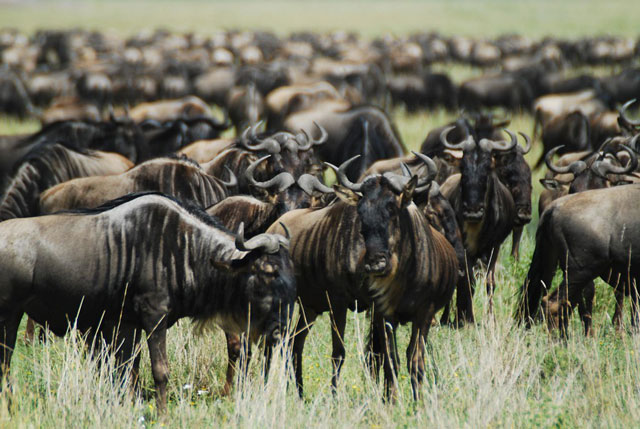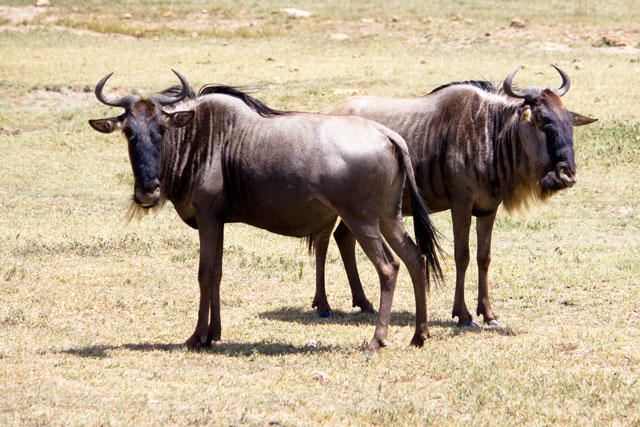You’ve probably seen a Wildebeest in pictures, on the television or in your biology textbook. They’re commonly found in the African Savanna and are very typical to what you would imagine.

They earned their name due to their menacing appearance – a large head and shaggy mane with sharp, curved horns.
Despite how menacing they look however, they’re actually the primary source of food for the real predators of the African Savanna – the Lion, Hyenas, and Cheetahs.
Now you know what Wildebeest are, here are some interesting facts about them.
- They are the most abundant big-game species in the East African Savanna.
- The Dutch, who settled in South Africa, gave the animal its name, Wildebeest, which means wild beast.
- Their bodies have a disproportionate appearance, with a large heavy front that looks menacing, but smaller hindquarters and legs.
- Wildebeests stick together in a herd to protect themselves from wild predators, and the most vulnerable to predation when they are separated or alone.
- Their average lifespan of 20 years in the wild African Savanna.
- Territorial and males will challenge one another when they feel like their territories are overlapping.
- Wildebeests are strictly grazers, preferring sweet, stocky grasses.

As you’ve read above, despite the ubiquity of the Wildebeest in the African savanna, they do have certain unique characteristics, and they play a vital role in the food chain.






